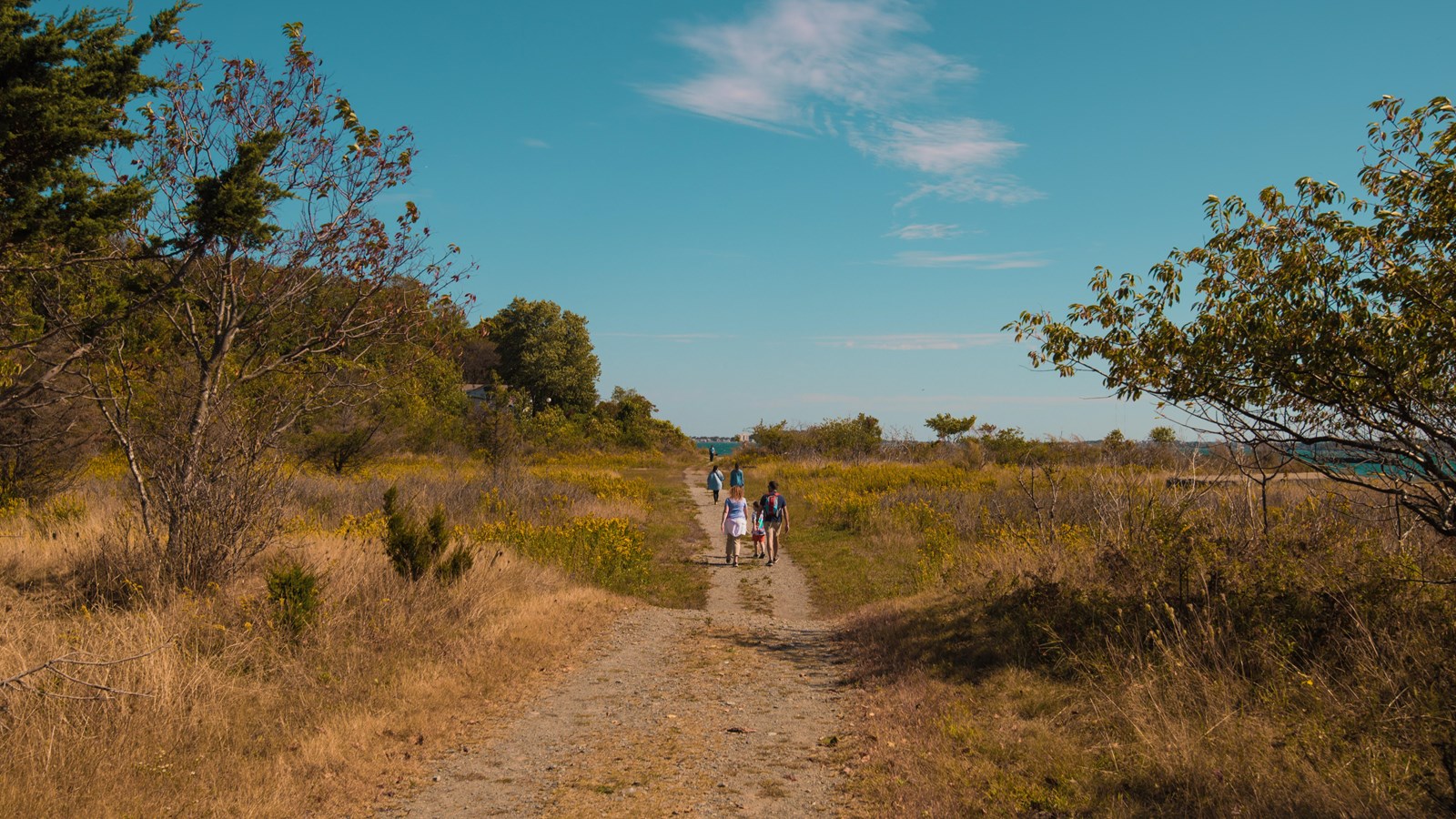Last updated: July 23, 2025
Place
Peddocks Island

Credit: Arlan Fonseca
Beach/Water Access, Benches/Seating, Dock/Pier, Ferry - Passenger, Grill, Junior Ranger Booklet Available, Restroom, Restroom - Seasonal, Scenic View/Photo Spot, Tent Campsites, Water - Drinking/Potable
Peddocks Island is one of the largest of the Harbor Islands, sitting between Hull and Quincy. The size of the island varies between 288 acres at high tide and 184 acres at low tide.1 Composed of five drumlin hills connected by low lying sand flats called tomblos, Peddocks is separated into four sections: East Head, Middle Head, West Head, and Prince Head. Peddocks also has the longest shoreline in the harbor, at about 5 miles long. It is an incredibly diverse island, with ponds, marshes, and forests.2 Like other islands in the harbor, Peddocks first served as a seasonal home to the Indigenous people in the area, who stayed on the island and fished in the summer before moving inland in the winter. After European colonization, Peddocks served as a grazing area for cattle for many years.3
Summer cottages were put on the island as early as 1876, some built by squatters, others built by residents of Boston and other neighboring areas. In the late 1880s, a Portuguese fishing village moved to Peddocks after being evicted from Long Island, floating their homes across the harbor. By 1900, at least one hotel stood on the West Head, and two more had been built on the island by 1907.4
In 1887, the War Department purchased land on East Head for a military installation.5 The fort was later named Fort Andrews. Completed in 1904, Fort Andrews served primarily as a training and staging area for soldiers going off to Europe during World War I.6
Despite the military presence, many residents remained on the island either part-time or year-round. One resident, Matilda Silvia, was the daughter of a tailor who served at Fort Andrews and lived on the island after his retirement. Silvia remembered her upbringing fondly in her book Once Upon an Island, saying,
Peddock's Island had been at the center of our lives, and anyone else who had who had grown up there. As children we embraced the natural learning and survival, and as adults, we relied on community and simplicity. When you're raised on an island, it is difficult to know or want any other kind of life. From never giving up the catch of the day to trusting that a captain would make it through ice to pick you up after school. From watching cannons explode on the hillside behind your home to smelling the first batch of fresh bread in the Fort’s bakery. All of these experiences and memories brought you back to The Rock [Peddock's], that one place you could count on and where [the sound of the ocean] would lull you to bed, and the neighbors would welcome you with a game of cards or a warm meal. It was hard to imagine living for very long anywhere else... When all you could hear was the water lapping, and the waves crashing, that was when you knew you were home.7
During World War II, the fort again became a training area for soldiers. In 1944, 1,300 Italian prisoners of war (POWs) were transferred from Fort Mckay in South Boston to Fort Andrews. These so-called prisoners were part of "Italian Service Units." While at Fort Andrews, they worked in a supervised environment and were paid. These POWs were even allowed to have visitors at the Fort and could go into Boston on special permits.
In 1951, the military declared Fort Andrews an excess installation, auctioning it off in 1957. The Commonwealth of Massachusetts acquired Peddocks in 1970 and the island has since become part of Boston Harbor Islands National and State Park.8
Learn More...
Footnotes
- National Park Service Boston Harbor Islands "Peddocks Island." Date last modified October 2022. Island Facts: Peddocks Island - Boston Harbor Islands National Recreation Area (U.S. National Park Service) (nps.gov)
- Kevin Damstra, Peddocks Island Interpretive Guide for Rangers and Volunteers, Commonwealth of Massachusetts, Department of Conservation and Recreation (2005), 23-28.
- National Park Service, Cultural Resource Inventory: Peddocks Island, (Boston: National Park Service, 2021), 27-28.
- Cathy Stanton, "A Place of Quiet Adventure: An Ethnographic Study of the Peddocks Island Cottages," Boston Harbor Islands National Park Area, (2016), 37-39.
- Gerald W. Butler, S.F.H., The Guns of Boston Harbor (1st book: Gerald W, Butler, 2001), 69-72.
- Cathy Stanton, "A Place of Quiet Adventure: An Ethnographic Study of the Peddocks Island Cottages," Boston Harbor Islands National Park Area, (2016), 37-39.
- Matilda Silvia, Once Upon an Island (Cohasset: Hot House Press, 2003),159-160.
- Cathy Stanton, "A Place of Quiet Adventure: An Ethnographic Study of the Peddocks Island Cottages," Boston Harbor Islands National Park Area, (2016), 41.
